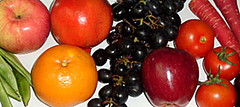 |
| Yeah, it's Doc |
Tony didn't beg at the table, but that was probably because I didn't give him table scraps very often (and never during family mealtimes) and because I rarely eat at the table myself, not wanting to deal with Doc trying to get my food. However, my father was prone to giving him the last bite of his dinner if Tony was around, which he often was, as you can imagine. Once he was diagnosed with diabetes, I was able to convince Dad of the error of his ways, and that stopped. Based on my experience with Tony, of the two solutions WebMD suggests -- controlling the dog's access to the table or teaching the dog to do something else -- I think I prefer the latter. This is probably because I had great success teaching Tony to move off the street onto grass, then sit and stay, whenever a car was approaching during our walks (there are no sidewalks in our subdivision -- you have to walk in the street. Yikes.). I think I could have gotten him to lie on his bed at our mealtimes without too much trouble, but if you think that you might have some problems there, there are training tip links with the article, too.
Good luck, and remember, to a dog, a rub on the belly is often just as welcome as a treat in the belly.










